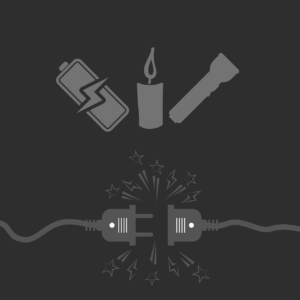
By Burkhard Schwarz, founder of the platform thg-vergleichstest.at ![]()
Many people may think that if they have a photovoltaic system, they can supply themselves with electricity in the event of a power cut. Unfortunately, this is a fallacy: a PV system does not work in the event of a power cut. Why is this the case?
Every photovoltaic system has an inverter that transforms the direct current produced by the solar modules when the sun is shining into alternating current, as required in the household. This inverter itself requires alternating current for its operation, so it cannot be operated with the direct current from the solar modules. As long as you do not have an emergency generator, this alternating current can only come from the supplier. And it is precisely this energy supply from the electricity provider that is interrupted in the event of a power failure – so the solar system is at a standstill. Even solar systems with battery storage!
Unless you also invest in emergency power functionality. If it is important to you that your solar system also works in the event of a power failure, make sure that your storage system or inverter is capable of providing emergency power when planning and configuring it. This is because retrofitting one is usually very expensive, if not impossible.

Burkhard Schwarz, platform operator thg-vergleichstest.at ![]()
In the event of a mains power failure, this emergency power system creates an isolated stand-alone power supply for your household in a matter of seconds. Your household grid is electrically isolated from the supply grid at all poles and then operated independently, i.e. as an “island”. Disconnection is mandatory for safety reasons. As soon as the mains power returns, the system recognizes this, ends stand-alone operation and reconnects the mains power. And the most important thing: during the emergency power supply, your battery is recharged with solar power. This is the only way to become truly independent of the utility company – but only as long as the sun is shining or your storage system is not yet empty.
Not all storage and inverter providers offer emergency power functionality. The selection process is complex and the additional costs are not insignificant. Expect to pay around € 5,000 for comprehensive, i.e. three-phase, automatic emergency power functionality. In addition, terms are used in a misleading way: Sometimes it is called emergency power, sometimes backup power, then there is single-phase and three-phase supply as well as basic emergency power for only a few consumers via a separate emergency power socket on the storage system or inverter.
About the author:
Burkhard Schwarz is an electrical engineer and renewable energy specialist. As a pioneer of photovoltaics and electromobility, he runs the comparison platform thg-vergleichstest.at ![]() for applying for the GHG e-premium in Austria, among other things.
for applying for the GHG e-premium in Austria, among other things.
